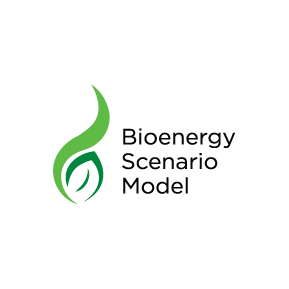Bioenergy Scenario Model (BSM)


Abstract:
The Bioenergy Scenario Model (BSM) is a unique, carefully validated, state-of-the-art, dynamic model of the domestic biofuels supply chain. BSM explicitly focuses on policy issues, their feasibility, and potential side effects. It integrates resource availability, physical/technological/economic constraints, behavior, and policy.
Model/Tool Platform:
STELLA
General Modeling Type:
Hybrid / other: Dynamic Market/Supply Chain Transitions (with feedbacks)
Primary analytical purpose:
Transitions:
Integrative scenario assessment of how supply chains or full market sectors transition overtime.
Secondary analytical purpose:
Cross-sector analysis:
Integrative scenario assessment of the interactions across parts of the supply chain or multiple market sectors.
Metric categories:
- Environmental:
- Environmental Productivity (feedstock-related, e.g., NPP or yield)
- Socio-economic:
- Other Socio-economic (e.g., GDP impact, Investment/NPV)
Geospatial resolution:
National
Temporal resolution:
Years
Laboratory:
NREL - National Renewable Energy Laboratory
Principal investigator:
Emily Newes
Model start year:
2005
Model last updated:
2020
Development status:
Fully Developed with periodic updates
Level of validation/review:
External Peer Review / Publicly Released
Links:
Model scope:
Biomass Supply
Feedstock Logistics
Conversion
Distribution
End Use
- Feedstock Types
- Starch
- Oil Crops
- Fiber Crops
- Cover Crops and Hay
- Agricultural Residues
- Herbaceous Energy Crops
- Forest Residues
- Woody Energy Crops
- Solid Wastes (e.g., MSW, C&D, yard trimmings)
- Algae
- Fats, Oils, and Greases
- Conversion Technology
- Starch to Sugars
- Lignocellulosic Biomass to Sugars
- Lignocellulosic Biomass to Gaseous Intermediate
- Lignocellulosic Biomass to Biocrude Intermediate (TC)
- Syngas Catalytic Upgrading
- Sugar Catalytic Upgrading
- Oil Catalytic Upgrading
- Sugar Biological Upgrading
- Alcohol Catalytic (e.g., ethanol or isobutanol to jet)
- HEFA
- Products/Process Outputs
- Transportation Fuels - Biodiesel
- Transportation Fuels - Ethanol
- Transportation Fuels - Renewable Diesel
- Transportation Fuels - Renewable Gasoline
- Transportation Fuels - Renewable Jet
- Biopower
- Intermediate - Sugars
- Intermediate - Clean Biomass-based Crop Oils
- Intermediate - Clean Biomass-based Algal Oils
- Intermediate - Pyrolysis or Biocrude Intermediate
- Intermediate - Syngas
- Bioproducts
- Other Process Output
- Transportation Market Segment
- Light Duty Vehicles
- Heavy Duty Vehicles
1
2
3
4
Analytical Purpose
Supply Chain Elements
Biomass Supply
Feedstock Logistics
Conversion
Distribution
End Use
Information last updated: Sep. 17, 2019 13:45:46 EDT